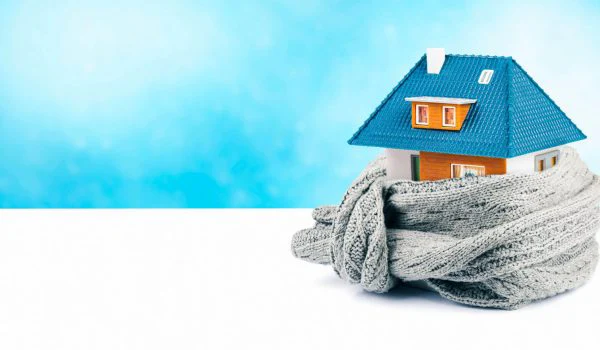
R38 Insulation FAQs for Los Angeles Property Owners
R38 insulation shows up often in attic quotes across Los Angeles, yet many homeowners are unsure what it means, where it belongs, and whether it’s worth the upgrade. This FAQ collects the questions Pure Eco Inc. hears most from clients in Los Angeles, Pasadena, Sherman Oaks, Van Nuys, Santa Monica, and nearby neighborhoods. The goal is to help property owners choose wisely, save on cooling costs, and improve comfort year-round.
What does R38 mean?
R-value measures resistance to heat flow. The higher the R-value, the better the insulation slows heat movement. R38 is a high R-value commonly used in attics. In practical terms, R38 creates a strong thermal barrier between a hot roof deck and the living space below. In Los Angeles, that barrier keeps indoor temperatures steadier in long cooling seasons.
Is R38 required in Los Angeles?
California’s Title 24 energy code sets minimum insulation levels based on climate zones. Most of Los Angeles County falls in zones where attic insulation of R30 to R38 is typical for code compliance in new homes and major remodels. For existing homes, upgrades often aim for R38 in the attic because the incremental cost over R30 is modest while comfort and energy savings improve. A Pure Eco Inc. advisor can verify your property’s zone, current insulation depth, and any permitting needs before work begins.
Where should R38 go in a Los Angeles home?
R38 is usually installed in the attic floor or along the roof line for conditioned attics. It is less common in walls because standard 2x4 or 2x6 wall cavities cannot reach R38 without exterior foam or a double-stud assembly. In multifamily buildings around Koreatown or Mid-City, R38 often goes above top-floor units to cut heat gain and reduce AC run time. In hillside homes in Hollywood or Silver Lake with vented crawl spaces, the attic remains the best first target for R38.

What types of insulation can achieve R38?
Several materials can reach R38. The right choice depends on access, ventilation, allergens, existing wiring, and the state of your roof and ducts.
- Blown-in cellulose: Dense coverage that reduces air movement through the insulation layer. Good for irregular attics in older Los Feliz and Echo Park homes. Often chosen for its sound-dampening qualities.
- Blown-in fiberglass: Lightweight, clean installation, and stable over time. Works well for larger attics in the Valley where even coverage is easy.
- Fiberglass batts: Quick installation in open joist bays, but coverage gaps are more common around wiring and framing. Best for simple, open layouts.
- Spray foam: Closed-cell or open-cell foam can meet or exceed R38 at lower thicknesses and also air-seals. It costs more and may change roof ventilation requirements, which requires careful planning.
For most single-family homes seeking r38 insulation Los Angeles upgrades, blown-in cellulose or fiberglass delivers strong value, quick install times, and predictable results.
How thick is R38?
Thickness varies by material. Blown-in fiberglass needs about 12 to 13 inches for R38, while blown-in cellulose needs roughly 10 to 11 inches. Batts labeled R38 are thicker than standard joist heights, so they often sit above the joists or stack with existing layers. Spray foam achieves R38 at lower thickness but may involve different details at rafters and ventilation.
What energy savings can a Los Angeles homeowner expect?
Savings vary by house size, attic conditions, and HVAC efficiency. In a typical 1,500 to 2,000 square foot home in North Hollywood or Westchester, upgrading a thin, patchy attic to R38 can reduce cooling costs by 10 to 20 percent based on utility data and client feedback. Homes with leaky ducts or poor attic air sealing may see larger gains when the upgrade combines R38 insulation with strategic air sealing and duct repairs.
Does R38 help with summer heat in the Valley?
Yes. In the San Fernando Valley, roof temperatures can reach 150 to 170°F on summer afternoons. Without adequate attic insulation, that heat radiates into living areas. R38 cuts that heat flow substantially, so rooms stay steadier, AC cycles lengthen, and evening cool-down happens faster. Clients in Encino and Woodland Hills often report a 3 to 6°F improvement in upstairs bedrooms after the upgrade, especially if attic ventilation also improves.
Will R38 make winter rooms warmer?
Los Angeles winters are mild, but many homes still feel drafty on cold nights. R38 helps retain heat and reduces cold ceiling surfaces that trigger discomfort. It works best when combined with air sealing around top plates, can lights, attic hatches, bath fans, and wiring penetrations. In Pasadena and Altadena, where older homes have many ceiling penetrations, air sealing plus R38 makes a noticeable difference.

How important is attic ventilation with R38?
Adequate ventilation helps manage moisture and roof deck temperature. In vented attics, soffit intake and ridge or roof vents should be balanced. Baffles keep air pathways open above the insulation. Without baffles, blown material can block soffits and trap heat. Pure Eco Inc. checks and corrects ventilation as part of an r38 insulation Los Angeles service, because insulation without proper airflow can cause hot spots and shorten shingle life.
Can R38 go over existing insulation?
Yes. Topping off is common. Installers assess the current depth and condition, level any matted areas, air-seal gaps, and then blow or place new material to reach R38. It is usually fine to place blown-in fiberglass over old cellulose or vice versa. If old insulation is contaminated with rodent droppings or moisture, removal is safer before adding new material. In homes near canyons or older structures with past infestations, removal and sanitizing protect indoor air quality.
Is an air barrier or vapor retarder needed?
Los Angeles homes rarely require a dedicated vapor barrier in the attic because the climate is dry and most attics are vented. The priority is air sealing. Stopping air leaks from the house into the attic preserves R-value, cuts dust, and reduces heat movement by convection. For spray foam applied to the roof deck, the assembly details change, and moisture control should be designed deliberately. A site visit clarifies the right approach.
What about recessed lights and fire safety?
IC-rated, airtight recessed lighting fixtures are safer and reduce attic leakage. For older non-IC cans, maintain the required clearance or replace them. Many Los Angeles homes built before 1995 have a mix of can types. During an R38 upgrade, Pure Eco Inc. identifies fixtures and uses proper covers, fire-safe materials, and manufacturer clearances to avoid hazards.
How long does an R38 attic upgrade take?
Most single-family attics take half a day to one full day, including prep, air sealing, baffles, and blowing. Larger homes, complex rooflines, or remediation work can extend to two days. In duplexes or fourplexes, access and shared systems can add coordination time.
What does R38 cost in Los Angeles?
Costs vary with access, prep work, material, and square footage. For a typical 1,500 to 2,000 square foot attic, R38 upgrades often range from the low $2,000s to the mid $3,000s for blown-in materials, including air sealing and ventilation adjustments. Spray foam can be several times higher due to material and labor. Utility rebates change by season and provider. LADWP and SoCalGas programs sometimes offer incentives for attic insulation Los Angeles insulation and air sealing; a technician can help document eligibility.
What are the common mistakes to avoid?
- Skipping air sealing before blowing insulation, which leaves major energy losses untouched.
- Blocking soffit vents, which traps heat and moisture.
- Compressing batts to fit under wiring or plumbing, which reduces R-value.
- Ignoring rodent contamination, which can cause odors and health issues.
- Covering junction boxes or restricting access to important components.
How does R38 interact with radiant barriers and cool roofs?
Radiant barriers reflect radiant heat from the roof before it enters the attic. Cool roofs reflect more sunlight and run cooler under direct sun. In hot Los Angeles microclimates, pairing R38 with a radiant barrier or cool roof can further cut attic temperatures. The benefit is strongest in unshaded roofs in the Valley and inland areas. If the roof is due for replacement, it is worth evaluating both upgrades together.
Will R38 help with sound?
Attic insulation mainly targets thermal performance, yet many homeowners notice a quieter interior after R38, especially with cellulose. It can soften traffic noise and dampen rain impact on older roofs. For significant sound control, wall assemblies and window upgrades carry more weight, but R38 in the attic still contributes.
What if the attic has ducts?
Ducts in hot attics are a major efficiency loss. During an r38 insulation Los Angeles project, technicians inspect ducts for leaks, support, and insulation thickness. Sealing joints with mastic and increasing duct wrap to R8 or better improves performance. If a future HVAC replacement is planned, consider moving ducts into conditioned space or foaming the roof deck, but that involves a broader design review.
How should property owners prepare for installation?
Clear access to the attic hatch, move cars to make room for hoses, and secure pets. If storage boards cover joists, discuss whether to keep them, build a raised platform, or remove them to allow full-depth R38. For homes with knob-and-tube wiring, a licensed electrician should verify safety before covering with insulation.
How does Pure Eco Inc. handle r38 insulation Los Angeles projects?
A site visit documents current insulation depth, ventilation, wiring, ducts, and signs of pests or moisture. The team photographs conditions, measures attic square footage, and writes a clear scope with line-item pricing. On installation day, crews protect floors, air-seal, install baffles, address can lights, and blow to a measured depth with rulers set across the attic. A final walkthrough confirms coverage, access, and cleanliness.
Why act before peak heat?
Spring and early summer offer easier scheduling and faster inspections. Upgrading to R38 before prolonged heat helps the AC perform through late summer, when electricity rates and demand spike. For many Los Angeles homes, this single project delivers the biggest comfort gain per dollar.
Ready to talk to a specialist?
Pure Eco Inc. serves Los Angeles, including Brentwood, West LA, Mar Vista, Glendale, Burbank, and the San Fernando Valley. For a quick estimate and a code-savvy plan for your property, contact Pure Eco Inc. and ask about R38 attic insulation, air sealing, and ventilation improvements. A short visit answers whether your home can reach R38 efficiently and which rebates apply.
Pure Eco Inc. provides professional attic insulation and energy-saving solutions in Los Angeles, CA. For over 20 years, our family-owned company has helped homeowners improve comfort, reduce utility bills, and make their homes more energy efficient. We specialize in insulation upgrades, spray foam installation, and attic cleanup for homes across Los Angeles County. At Pure Eco Inc., we believe in treating our customers like family and creating a greener, healthier living environment for every household we serve. Call today to schedule an attic insulation inspection or get a free estimate. Pure Eco Inc.
422 S Western Ave #103 Phone: (213) 256-0365 Website: https://www.pureecoinc.com Social Media:
Facebook |
X |
Instagram |
Yelp
Map: View on Google Maps
Los Angeles,
CA
90020,
USA